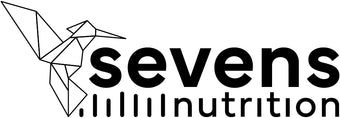A thousand-year-old history and its current relevance.
Red yeast rice ( Monascus purpureus ) is the result of fermenting rice with a fungus that produces bioactive compounds, including monacolin K. In traditional Chinese medicine, it has been used for centuries not only as a colorant and condiment, but also as a tonic for cardiovascular health. This ancient practice has sparked the interest of modern science, especially for its ability to regulate blood cholesterol.
What is monacolin K and how does it work?
Monacolin K is a natural compound that acts as a competitive inhibitor of the HMG-CoA reductase enzyme, which regulates cholesterol synthesis in the liver. This mechanism is identical to that of certain lipid-lowering drugs (statins), but at lower and generally better-tolerated concentrations. Numerous clinical studies have shown that doses of 2 to 3 mg daily can significantly reduce LDL cholesterol, known as "bad cholesterol."
For example, a study by Li et al. (2016) found that 3 mg of monacolin K daily reduced LDL cholesterol in patients with mild dyslipidemia. A subsequent meta-analysis (Cicero et al., 2023), which included 13 clinical trials, confirmed that even doses lower than 4 mg have a clinically relevant effect, with a favorable safety profile.
The importance of cellular energy in cardiovascular health
Another key aspect of cholesterol management with monacolins is their potential side effect: decreased endogenous levels of coenzyme Q10 (CoQ10), a compound essential for energy production in mitochondria. This decrease may be related to the onset of fatigue, weakness, or myalgia in some statin users.
CoQ10 acts as an electron transporter in the mitochondrial respiratory chain, an essential step for the synthesis of ATP, the body's primary energy currency. Some studies, such as the meta-analysis by Banach et al. (2015), have observed that CoQ10 supplementation can alleviate muscular symptoms in statin users. Although other studies have not shown conclusive benefits (Skarlovnik et al., 2014), the inclusion of CoQ10 in monacolin supplements may represent a useful preventative measure.
Red yeast rice and cardiovascular prevention
Hypercholesterolemia is one of the main modifiable risk factors for cardiovascular disease. In this context, red yeast rice is presented as a nutritional tool supported by scientific evidence for those seeking natural alternatives. Its use is particularly appropriate in cases of mild dyslipidemia or as a support for lifestyle changes.
In the next articles you will learn about:
-
How to keep your cholesterol under control through natural mechanisms.
-
The fundamental role of coenzyme Q10 in mitochondrial health and fatigue prevention.
-
How a synergistic formula can provide benefits beyond lipids.
-
When to expect results and how to maximize the supplement's effectiveness.
This approach is based on the principle that a thorough understanding of how active ingredients work allows you to make informed and responsible decisions about your cardiovascular health. Discover how Sevens Red Yeast Rice can help you.



